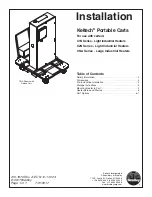
OBJECT OF THE GAME
The object of the game is to race your opponent(s) around the course of wickets and hit the finishing stake before your opponent(s).
NOTE:
The court layout can be made smaller depending on the space available.
GAME OVERVIEW
1. The game can be played by 2-6 players.
2. Each player plays with one ball in singles, doubles, triples or cut throat (three or more players each playing for themselves).
However, in singles play each person can play with all balls on one side if desired. Each ball is played individually with both players
and balls alternating turns.
3. Each ball in a game can score 16 points for its side, 14 wicket points and 2 stake points.
4. Points do not have to be used in a game but are helpful if the game has a time limit. The player with the most points
at the end of the time limit is the winner.
RULES OF THE GAME
1. A coin toss is used to determine which side goes first.
2. All balls start halfway between the starting stake and the first wicket.
3. Play progresses by hitting the ball through wickets 1-2-3-4-5-6-7 in order and then hitting the turning stake. (See FIG 2).
The ball is then played through wickets 8- 9-10-11-12-13 and 14. The game is completed by hitting the finishing stake.
4. All balls must be played from where the ball comes to rest.
5. In partnership play, a player may decide not to hit the finishing stake and make his or her ball a
"rover"
to hinder their opponents.
6. A) A single point and stroke (additional turn) are won for each wicket and stake that is made in the proper order.
B) Two points and two strokes (two additional turns) are won if a ball is hit through wickets 1 and 2 and/or 6 and 7 with one stroke of
the ball.
7. A ball shall be deemed to have not passed through a wicket if a straight edge laid across the wicket touches the ball.
8. Bonus strokes may not be accumulated. Once a wicket is made or a stake is hit the previous bonus strokes are lost. The exception is
wickets 1 and 2 and 6 and 7 as stated in rule 6 B.
9. A player's turn is over if the ball does not go through a wicket, hit a stake or another ball and has no additional strokes remaining.
10. A player's ball hitting another ball (roquet) has four options:
A) Take two bonus strokes from where the ball comes to rest.
B) Place their ball one mallets head length away from the struck ball (where it comes to rest) and then take two bonus strokes.
C) Place their ball in contact with the ball that was struck (where it comes to rest), then strike their ball to send both balls in desired
direction.
The player then has one bonus stroke remaining.
D) Place their ball in contact with the ball that was struck (where it comes to rest) and place their foot on their own ball so it is
immobile, and strike the ball so as to send the other ball in desired direction while the striker's ball remains in place. The player then
has one bonus stroke remaining.
11. A player can hit (roquet) another ball only once per turn, except as described as in rule 10. C) and D).
12. A) The player's ball that hits (roquets) another ball is
"dead"
. It does not become
"alive"
and is not able to hit (roquet) another ball
until it goes through a wicket or hits the turning stake in the proper order, except as described as in rule 10. C) and D)
B) A rover ball (see rule 5.) may become "alive" by going through any wicket in any direction.
13. If a player hits (roquets) more than one ball in a stroke he or she will get bonus strokes from the first ball roqueted with the other
ball(s) remaining where they came to rest.
14. Hitting another ball (roquet) a second time without becoming "alive" as described in rule 12. is not a fault, however, no strokes are
received for the second roquet. Play then proceeds from where the ball(s) comes to rest.
15. A rover may be driven into the finishing stake and taken out of the game by any legal stroke by any player at any point.
16. A rover can only score a point by hitting the finishing stake and is then removed from the game.
17. A ball that goes out of bounds should be placed 36 inch inside the boundary line at the point of exit. If the player has an additional
stroke he or she then plays it.
18. If another player (partner or opponent) puts your ball through its proper wicket or turning stake, your side gets the point but no bonus stroke.
19. If a ball is played out of turn it is not a fault. The ball(s) are replaced, and the proper ball played.
FAULTS
If a fault is committed, all balls are replaced as before the fault, and the player's turn ends. The following are faults:
A. If you push the ball with the mallet instead of striking it squarely.
B. If your mallet strikes another ball instead of the ball you are playing.
C. If your mallet hits a wicket or stake.
LG100Y21042
www.medalsports.com
5
(The last page)
English
CROQUET BALL RULES

























